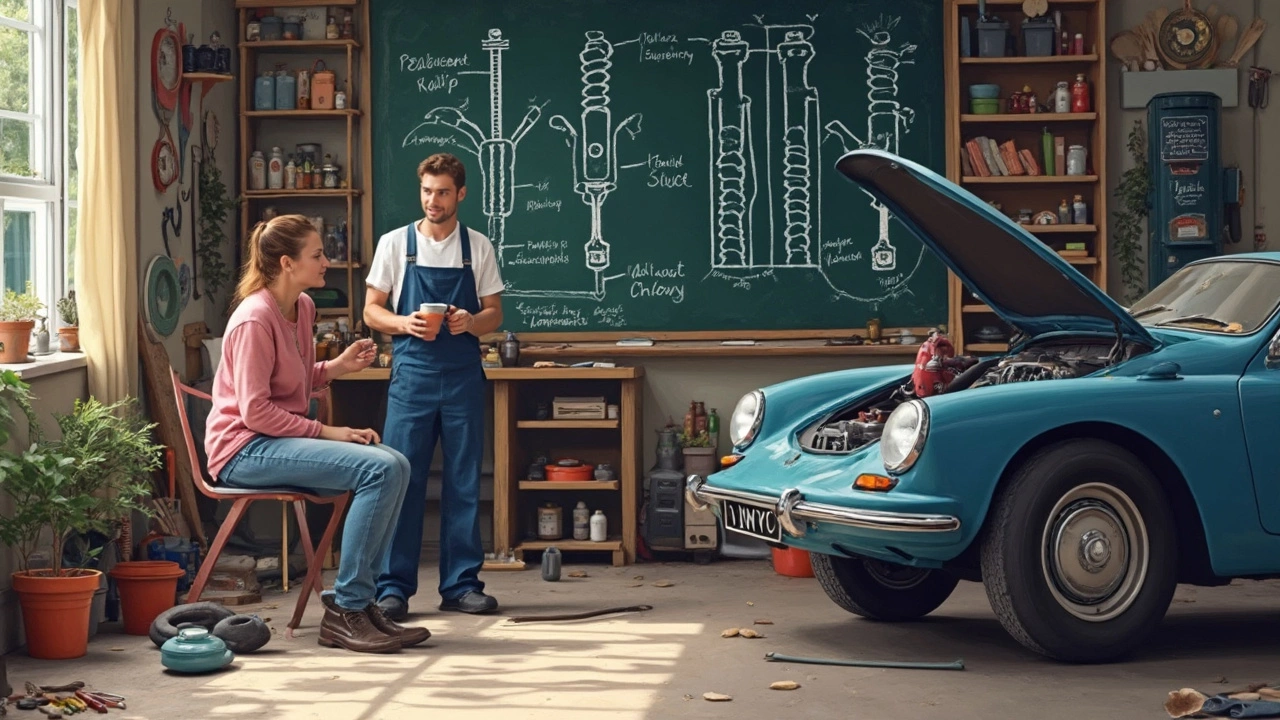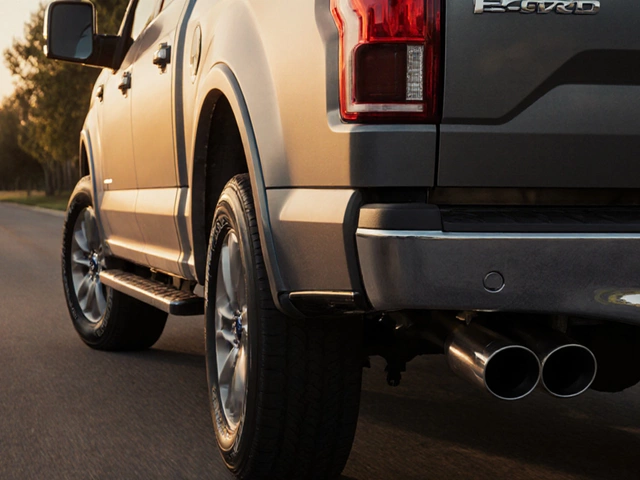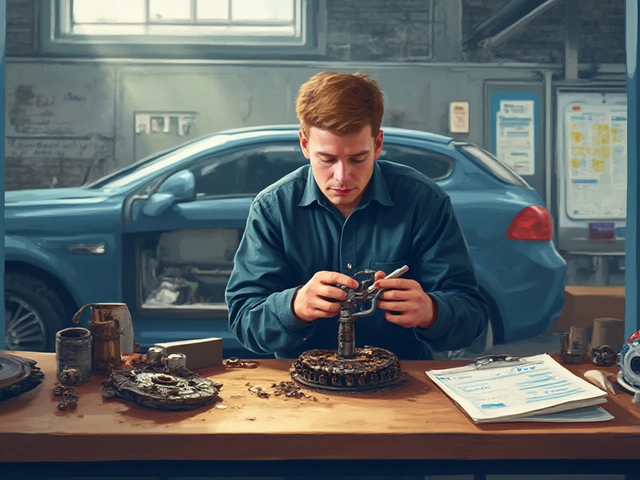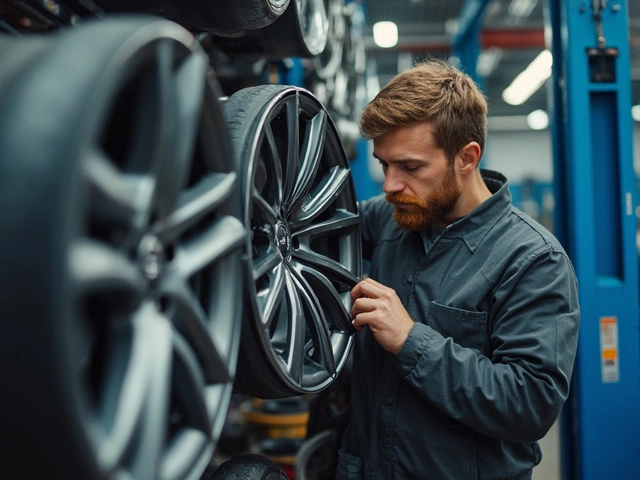Ever feel like every tiny crack and pothole rumbles right through your seat? You're not stuck with that bone-rattling ride. There are some surprisingly effective ways to make your car suspension softer, and you don't need to be a mechanic to get started either.
The most important thing to know: softer suspension means you'll probably give up a bit of that sharp, sporty handling. But if you're after comfort—especially on rough city streets or long highways—it's a worthwhile trade. Honestly, nobody likes arriving somewhere feeling like they've just wrestled a washing machine.
The quick wins usually start with your shocks, struts, and springs. These are the parts that soak up bumps and dips before you feel them. Swapping to softer versions isn’t just for luxury cars; plenty of aftermarket options can turn your ride from stiff to silky just by choosing the right parts. Feeling lost with all the choices? It's easier to spot what will improve your comfort than you might think—with the right tips, you'll know exactly what to look for.
- Why Go Softer? Comfort vs Handling
- Swap Out Shocks and Struts
- Change Your Springs for a Smoother Feel
- Tire Choices That Soften the Ride
- Extra Tips for Everyday Comfort
Why Go Softer? Comfort vs Handling
So, what’s really at stake when you mess with your car’s suspension? The biggest trade-off is between comfort and how your car handles. A softer suspension is all about soaking up bumps, making the ride feel smoother, and keeping you less sore after long drives. On the flip side, a stiffer setup means your car reacts better in corners, grips the road harder, and feels more "sporty." That’s why race cars are stiff—they’re built for fast turns, not plush rides.
Most regular cars split the difference, aiming for an okay level of comfort and handling. But let’s be honest: if you drive on cracked city roads or pothole-filled highways, a softer ride saves your back and sanity. Shock absorbers, struts, and springs—basically everything between you and the road—can be tuned to prioritize comfort over sharp cornering. If your daily commute is more about grinding through traffic than attacking winding roads, car suspension comfort should win out.
- Tight suspension = less body lean, more "feel" for the road, but you feel more bumps.
- Softer suspension = more isolation from rough pavement, but a bit less sharpness when cornering.
Here’s a quick breakdown for everyday cars versus sportier ones:
| Suspension Type | Main Benefit | Main Drawback |
|---|---|---|
| Softer | Comfort, absorbs bumps | More body roll in corners |
| Stiffer | Better handling, less roll | Harsh ride on bumps |
It’s not just about personal taste, either. If you’re carrying kids, elderly passengers, or anyone who hates rough rides, a softer suspension just makes life easier. Remember, you can’t have both ultimate comfort and razor-sharp handling—pick based on what matters to you most.
Swap Out Shocks and Struts
If your car still has the shocks and struts it rolled out of the factory with, odds are they’re tuned for a mix of comfort and crisp handling, not pure softness. If you want a cushier ride, swapping these out is one of the fastest ways to notice a difference. Here’s why it works: shocks and struts control how your suspension moves when you hit a bump. Softer aftermarket parts let the wheels move up and down more easily, smoothing out the rattle that stiff factory setups can deliver.
The trick is to find shocks and struts known for delivering a soft ride. Look for ones labeled as “comfort,” “touring,” or “OE-style replacement.” Steer clear of anything that says “performance” or “sport” unless you love feeling every pebble in the road. Brands like Monroe, KYB Excel-G, and Bilstein's B4 series are favorites for a reason—they’re designed with daily driving comfort in mind and won’t break the bank, either.
Here's a quick comparison of shock/strut types and how they affect ride comfort:
| Type | Ride Feel | Common Use |
|---|---|---|
| OEM/Factory | Balanced – not too soft or stiff | General use, most cars |
| Touring/Comfort | Softer – absorbs bumps better | Daily driving, city/highway |
| Performance/Sport | Stiff – firm, responsive | Sporty cars, performance upgrades |
Not sure when to replace your shocks or struts? If your car bounces a couple of times after going over a speed bump, or you hear clunking noises, it’s probably time. Replacing worn shocks doesn’t just improve comfort—it makes your car safer, too. You’ll get better braking and more control, especially on rough roads.
One last thing: always replace shocks or struts in pairs (both front or both rear) to avoid weird handling issues. If you want to go all-in on comfort, get a pro to handle the install and double-check alignment.
- Pick “comfort” or “touring” shocks for a smoother ride.
- Stick with well-known brands for peace of mind.
- Replace in pairs for balanced car suspension feel.
- Watch for key signs of wear like bouncing or weird noises.

Change Your Springs for a Smoother Feel
Swapping out your springs is one of those things that makes a real difference in how your car feels. If you want a softer ride, the type and rating of your springs matter more than most people realize. Factory springs are often designed for a balance of comfort and handling. But if you’re dealing with a rough commute or bumpy roads every day, softer aftermarket springs can make a night-and-day difference.
What makes a spring “softer”? It comes down to spring rate—the amount of force needed to compress the spring. Springs with a lower rate compress more easily, so they smooth out bumps instead of transferring every jolt to your seat. Common options include progressive-rate springs, which get stiffer as they compress, and linear-rate springs, which offer the same softness the whole way through. For pure comfort, a lower-rate, linear spring usually feels best, but progressive-rate springs are a good choice if you want some control during cornering or heavier loads.
Here’s how you can approach upgrading your car suspension with softer springs:
- Check compatibility. Not every spring fits every car. Look for springs made specifically for your car’s year and model.
- Pick the right spring rate. Ratings are usually shown in lbs/in or kg/mm. Stock rates are in the middle; softer springs will have a noticeably lower number.
- Mind your ride height. Softer springs may lower your car a bit under your own weight. Make sure you’re comfortable with how your car will sit after the swap.
- Think about matching shocks. Very soft springs can overpower stiff or performance shocks. If you’re swapping springs, check if your shocks need to be upgraded too, or you might get a floaty, bouncy ride.
Professional installation is often worth it, since the job can get tricky and you really don’t want one side lower than the other. Plus, an alignment afterward is a must if you want your tires to wear properly and the car to track straight.
Bottom line: softer springs can transform your driving experience, especially if rough roads are your daily enemy. Just be honest with yourself about how much handling you’re willing to sacrifice. And if you’re not sure, talk it out with a suspension shop—the right advice will save you cash and hassle down the line.
Tire Choices That Soften the Ride
Most folks overlook their tires when chasing a softer ride. But here’s a fact: tires are your car’s first line of defense against rough roads. Choosing the right ones makes a real difference—sometimes even more than swapping suspension parts. Think about it: every bump travels through your tires before it ever hits your springs or shocks.
Here are the things that matter most if you want to dial up comfort:
- Car suspension gets a big boost in smoothness from tires with higher sidewalls (that’s the distance from the rim to the outer tread). Taller sidewalls bend and flex more, giving extra cushion. If you’ve ever switched from low-profile tires to conventional ones, you may have felt this straight away.
- Softer tire compounds also soak up vibrations better. Touring and all-season tires usually have softer rubber than performance tires. Check the tire’s UTQG rating: a lower treadwear number often means the rubber is softer and the ride is smoother.
- Don’t crank tire pressures too high. Most folks run pressures at or above the max listed on the tire, but this makes the ride harsh. Stick to what’s in your owner’s manual—maybe even a hair lower, just not below the minimum safety guideline.
- Consider moving down a wheel size, if practical. Smaller wheels mean you can run taller sidewalls (for the same total diameter). This is a popular trick for folks who find their rides punishing after putting on big aftermarket wheels.
Here’s how some common tire types stack up for comfort:
| Tire Type | Typical Sidewall Height | Ride Comfort |
|---|---|---|
| Performance (low profile) | Short | Poor |
| All-Season Touring | Medium/High | Good |
| Winter | Medium | Very Good |
| Truck/SUV (comfort focused) | High | Excellent |
Of course, every car is different, and you’ll want to check that any changes fit your wheels and don’t mess up your speedometer or handling. But if you’re after a softer ride, tires are the easy place to start—and usually much cheaper than new suspension parts.

Extra Tips for Everyday Comfort
Let’s face it—sometimes it’s the little stuff that really takes the edge off rough roads. Besides swapping out big-ticket suspension parts, you can do a bunch of practical things to make your daily drive feel softer without much hassle or expense.
Start by checking your tire pressure. Lots of drivers forget this step, but over-inflated tires turn every bump into a jolt. Set your tire pressure a bit lower than the maximum listed on the sidewall (but stay inside the safe range in your car manual). For most passenger cars, that usually means 30-35 PSI. Even just a few PSI makes a real difference in how cushy your ride feels.
Seat cushioning is another winner. Try a simple gel or memory foam pad made for car seats—they’re cheap, they work, and you don’t need tools to install one. This tip appeals to everyone who hates feeling like the seat is made of concrete.
Pay attention to road noise and vibration. If your car is older, worn bushings (the rubbery bits between your suspension and frame) might be making things harsh. Upgrading to fresh rubber, or even softer polyurethane bushings, will keep a lot of that sharp vibration out of your cabin. It won’t cost much if you go to an independent shop. Plus, it keeps your car suspension lasting longer.
Stay away from big, heavy aftermarket wheels. Every inch you add in rim size, you lose a bit of tire, which means less padding against the road. Stick closer to your stock wheel sizes if you want comfort. If you switched to bigger wheels and regret it, going back often brings a softer ride right away.
If you’re curious how much these little changes matter, take a look at the impact below:
| Upgrade or Tweak | Expected Comfort Boost (%) |
|---|---|
| Lower tire pressure (by 2-3 PSI) | 10-15% |
| Seat cushioning pad | 5-10% |
| Replace bushings | 10-20% |
| Return to stock wheels/tires | 8-12% |
To sum it up, these everyday tips can tune your ride just enough so commutes and trips feel a lot less punishing. Mix and match them with other suspension upgrades and you'll notice a difference—sometimes more than you expect from just one small tweak.






